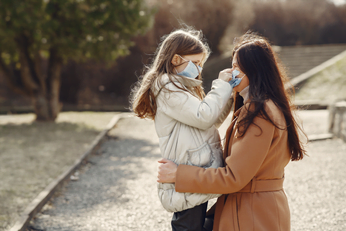The numbers speak for themselves. Since the coronavirus pandemic began in the world Trafficking in the material of sexual exploitation of children and adolescents – the misnamed “child pornography” – on the Internet tripled. This is warned by the International Association of Internet Hotlines (Inhope), an organization made up of a network of hotlines that receive complaints on a global scale. In a context where hyperconnectivity made boys and girls much more vulnerable, the majority of these photos and videos are taken by themselves, victims of grooming and other cybercrimes. Therefore, the role of adults in prevention and early detection is essential.
Deception through false identities, extortion and threats are part of the complex plot in which criminals entangle children and adolescents to obtain the images that are later fed into the networks of pedophiles. Given this reality, last week Te Protejo Latam was launched, a regional initiative that seeks to prevent and work on the early detection of sexual crimes on the Internet, as well as collaborating with the authorities to find criminals, assist victims and ensure that justice is done. Fundación PAS (Mexico), ChildFund Ecuador and Grooming Argentina participate, supported by the experience of Red PaPaz (Colombia) and Inhope, with the support of the End Violence Fund, International Center for Missing & Exploited Children (Icmec) and Interpol.
From Grooming Argentina, they highlight that our country is among the 10 with the highest traffic of material for sexual exploitation of boys and girls online, and that 85% of cybercrimes correspond to what is known as “child pornography” and grooming. On the other hand, Inhope’s figures show that between 2017 and 2019 the number of reports of sexual abuse material on the Internet grew almost 50% globally. Regarding the age of the victims, most are between 3 and 13 years old and although it is more frequent that they are women, the number of men also increased considerably. Removing material from the network as soon as possible is key, as otherwise It can be active for 20 years, generating a circle of constant revictimization.
The grooming steps
Grooming is a cybercrime that is characterized by the harassment by an adult of children and adolescents through the Internet to obtain some type of sexual gratification or sexual images. How does it work? Silvia Ongini, child and youth psychiatrist in the pediatric department of the Hospital de Clínicas and co-author of the book The superpower of sex education, explains that the boys or girls begin to chat with a new virtual friend supposedly their age. They don’t know it, but that new “friend” is an adult who seeks to establish a bond of great trust and collects important information such as the school the boy goes to or what his inner circle is. While, it convinces it that, by way of “game”, it does something erotic like taking a nude photo.
When the camouflaged adult’s demands begin to become more explicit and abusive, the children refuse to comply, unleashing a process of extortion using the data that the victim herself gave. The threats are in the style of “I am going to send the photos you shared to your parents or classmates.” They are not isolated cases. 35% of children and adolescents have ever been asked to send naked or scantily clad photos and 33% received images or videos of sexual content from a stranger who contacted them online, according to a recent report by Grooming Argentina. In addition, six out of 10 boys and girls between the ages of 9 and 17 speak to strangers online and three out of 10 have ever personally met someone they contacted through this means.
The commercialization of images of sexual exploitation is closely linked to grooming. “The groomer uses these images to satisfy his libidinous needs or to introduce them into a child pornography network,” says Daniela Dupuy, prosecutor in charge of the Specialized Crime Unit and Computer Contraventions Unit (Ufedyci), which reports to the Public Prosecutor’s Office for The city of Buenos Aires. The prosecutor observes with concern the increase in reports of cases of production, marketing and distribution of material for sexual exploitation of boys and girls during the quarantine. While January received 3,119 reports, in April (the peak month) there were 4,870 and in June 3,583. In the first week of July alone, there were 653.
The hidden dangers of sexting
But grooming is not the only crime through which the so-called “deep Internet” is supplied with material for the sexual exploitation of children and adolescents. It also thrives on sexting, a widespread practice among boys and girls sending messages, photos and videos with sexual content.
“Sexting is neither safe nor private. According to a survey we carried out, four out of 10 adolescents between 14 and 17 years old practice it,” says Hernán Navarro, founder of Grooming Argentina. Those images can end in WhatsApp groups or the cell phones can be lost, stolen or hacked. “Today, a teenager who practices sexting without due protection can see its content bouncing off the Internet when she is 60 years old,” adds Navarro. Ongini advises: “When they share this material, the boys see it as a game, they are induced by peers and are not aware that it can be used by anyone. As adults, we should calmly discuss these things with them without eroticizing the subject or demonizing “
Prevent, the key
According to specialists, to prevent boys and girls from being victims of this type of crime, talking about it is key. “From Grooming Argentina we are working on a Comprehensive Sex Education (ESI) with a digital perspective. Understanding that today boys at the age of 9 access their first cell phone, from first grade we have to work on providing resources for care on digital platforms” Navarro maintains.
Ongini, who is co-founder of the Center for Assistance and Prevention of Sexual Abuse in Children and Adolescents (Cepasi), highlights that as adults we cannot control all the variables, but there are certain issues related to education that can make boys and girls Girls are less likely to bite on certain hooks. “We must teach them to take care of themselves to prevent abuse and, in the worst case, to defend themselves against them by counting on us as allies,” he emphasizes.
On the other hand, he advises that the ideal is that until approximately 14 years of age, boys do not create profiles on networks or use them in the way that we adults use them, that is, with total privacy and without anyone else having access to your accounts. “When this seems exaggerated to a father, the first thing we professionals ask is if they would leave their sons or daughters alone in a downtown square at dawn. If the Internet were a physical space, we would see even more people circulate. than in a plaza at any time. It is definitely not a healthy space to leave them alone, “exemplifies Ongini. Therefore, establishing clear rules on the use of the Internet is essential.
More information:
- To make the complaint, contact the Cybercrime Prosecutor’s Office of the Attorney General’s Office: [email protected]. In the city of Buenos Aires, you can report it to the Specialized Fiscal Unit for Crimes and Computer Violations (Ufedyci), which reports to the Buenos Aires Public Prosecutor’s Office: 0800-3334-7225 / [email protected]. In addition, in any police or prosecutor’s office on the other hand, on line 134 information, advice and complaints are received. In the Grooming Argentina App, available for Android and Iphone, you can also report and be assisted 24 hours a day by a specialist: www.groomingargentina.org
- Grooming Argentina
- Center for Assistance and Prevention of Sexual Abuse in Children and Adolescents (Cepasi): [email protected]
- I Protect You Latam: Its objective is to work in an articulated way to respond to a crime that knows no borders, since the material can be obtained in one country, be housed in another and be distributed in a third party.
ALSO
.
Publicado en el diario La Nación




